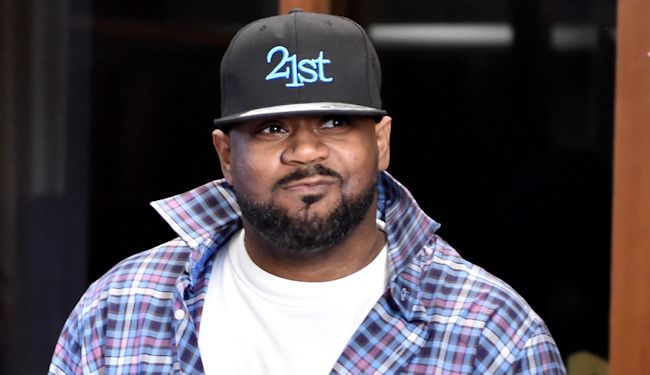
My love for hip-hop began inside my friend’s 1988 Peugeot sedan. He had popped in a tape of experimental hip-hop group The Gravediggaz’s debut album entitled Six Feet Deep. I had never heard anything remotely close to the words that hissed from his dusty speakers. It was offensive, creative, perverse, and had completely changed my perspective of music. One of the sonic engineers of that album, Grammy award-winner RZA, also fronted a better known hip-hop group: Wu-Tang Clan. In 1997, the Wu-Tang Clan became the best-selling hip-hop group of all-time by selling more than 600,000 copies of their sophomore effort, Forever, within one week.
One of the group’s “swordsmen” included Ghostface Killah (also known as Ghostface), an artist who would continue the Wu-Tang Clan’s dominance over the music charts with his 2000 effort, Supreme Clientele. Where Six Feet Deep had expanded my understanding of hip-hop’s limits in creativity, Supreme Clientele rocketed me past expectations and left me breathless. And I’m far from alone: Spin named it one of the 20 best albums of 2000, while Vibe named it one of the 10 best of that year. While rhetorically the album is flush with visually stunning verses, it is perhaps the genre-busting elements of the artifact that truly make it remarkable.
Supreme Clientele is full of enterprising references to blaxploitation films, tales of violence, drugs, sexual relationships, off-beat topics, and visceral humor. Ghostface makes mince meat out of the English language, dicing and slicing words together to form new phrases, many of which the meaning is still in contention. Take this section from the first song, “Nutmeg“:
Tidy Bowl, gung-ho pro, Starsky with the gum sole, Hit the rump slow, parole kids, live Rapunzel, but Ton’ stizzy really high, the vivid laser eye guide, Jump in the Harley ride, Clarks I freak a lemon pie.
Ghostface is clearly in command of his word choices, and there are no wasted elements in the above lines. Let’s dissect some of this stanza further to understand the true content, and thus the feeling he’s trying to convey early on in the album. Tidy Bowl (clean), gung-ho pro (in charge of his own recklessness), Starsky with the gum sole (’70s TV show reference), jump in the Harley ride (a reference to a vehicle primarily used by white Americans), Clarks I freak a lemon pie (he likes to wear lemon colored-Clarks, a type of shoe).
Within the very first verse of the first song, Ghostface is blending together urban fashion with white American icons. In the same song, he mentions John McEnroe, Calvin Coolidge, and Slick Rick all in the same breath. This is just one example of the manic content located within the album; it would take a novel to rhetorically dissect this work. There is no sense of a controlling agent in all of these songs, which in turn becomes the controlling agent throughout the album. In other words, you do not know what to expect when listening, except that you should expect nothing.
Concerning the structure and form of the stanzas, we encounter something new not only to hardcore rap, but to the field of hip-hop in whole: stream-of-conscious rap. Take this excerpt from “Buck 50”:
Ghetto-fabulous, Ton’ Atlas, Zulu Nation in the ’80s in front of Macy’s, I start my own chapters, Tyco night-glow velvet pose, special effects, High-tech armors merc you at the shows.
Here, we receive all sorts of images, from 1970s toys, to references to a pro wrestler and then a musical maestro. It is like watching a news show at high speed, barely catching glimpses of figures, words racing past the screen in clusters. It’s within this venue that critics and fans alike designated Supreme Clientele one of the most creative and ground-breaking works in hip-hop. Yet, it is also this form of free verse poetry that seemed to excel the album past the status of a “hardcore rap” album.
The genius in Ghostface’s sophomore work tends to be more in the form of his approach. His off-the wall lyrics are very difficult to understand, most likely on purpose (again, that is the controlling agent in this work). What makes this album so revered in the hip-hop community is not his approach to the sub-genre of hardcore hip-hop, but to his approach to the situation he presents his version of the sub-genre in.
Amy Devitt, professor in genre analysis, explains in Writing Genres that, “Recurring situations are what create genre.” Writers encounter a situation enough times to create a rhetoric that is applied to that situation for future application. With the “hardcore” genre firmly established with Wu-Tang’s first album back in 1993 — a genre built on uncommonness throughout the underground spectrum — it would take something different in order to create a sense of originality with the medium. That “something different” was Supreme Clientele.
What Ghostface did with this album is change the situation. He took the genre of hardcore hip-hop, a genre that he and his team had been perfecting for years, and applied it to the realm of free-verse poetry and stream-of-conscious prose. As Irene L. Clark explains in Concepts of Composition, “We do not construct the situation directly through the text, however; rather, we reach the situation through the genre.” Ghostface used the genre he was familiar with to create a new situation in which there was no previous rhetoric to define. Therefore, while it is easy to select a ready-made term to file this work under — terms such as hardcore, underground, or independent rap — it is impossible to say that this is merely another work of the hardcore rap movement.
And, with no definitive peer or label to file Supreme Clientele under, it remains a one-of-a-kind phenomena. Works like this come along only once every blue moon. Therefore, it should be piled next to the Illmatic‘s, Ready to Die‘s, and Reasonable Doubt‘s as one of the greatest rap spectacles of all-time. Anything less than that distinction would be criminal.






